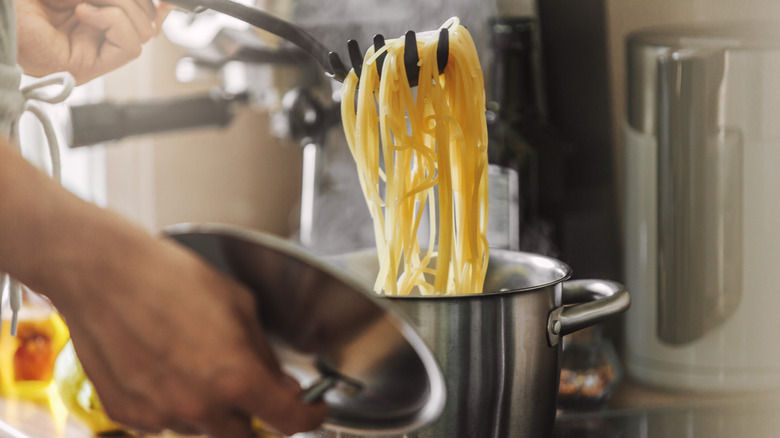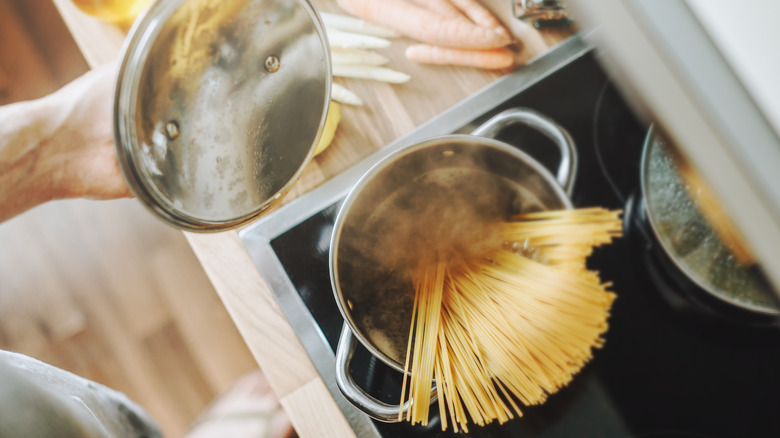The Most Important Time To Stir Pasta While Cooking
"Spaghetti, again?" said no one ever. There's a reason most grocery store shelves are lined with different types of pastas and sauce brands. According to Share the Pasta, the average American consumes 20 pounds of pasta every year. Collectively, the U.S. consumes 5.95 billions pounds annually. That's a lot of noodles.
Maybe you're like most home cooks and have spent hours over the stove trying to perfect that elusive al dente boil. If you cook a pasta al dente, you cook it just long enough so that it is neither hard nor soft but is firm and slightly chewy, according to Master Class. Al dente means "to the tooth" in Italian, perfectly describing the satisfaction of that tender-firm bite.
But, like so many home cooks visiting and revisiting their favorite pasta recipes, there is a crucial mistake lots of us make — perhaps without even knowing it. The most tedious part of spaghetti night is stirring, and stirring, and stirring. Or else, forgetting to stir, and rushing back to the pot to scrape stuck noodles from the bottom. Is the run-around really necessary?
For a perfect, stick-free, al dente pasta, when you stir is key.
Stir at the beginning
Timing can be everything in the kitchen. But, when it comes to stirring pasta, like so many things in life, it turns out the time is right now. Stir that pasta right after you've added it to the boiling water. To keep it from sticking, Fine Cooking recommends a good stir during the first minute or two of cooking.
Pasta releases starch as soon as it starts to cook, notes the BBC. Boiling water starts this process immediately, making the surface of your noodles sticky, which is why you always have to stir to separate them. If you don't stir, the pieces of pasta touching one another will literally cook together.
Smithsonian magazine underscores the importance of letting your water reach a rolling boil before adding your pasta. The boiling temperature is what prevents the pasta from getting mushy as the starch secretes. That first plunge into the boiling water is critical to the texture of the final product. Wait that extra minute or two until you see big bubbles in the pot to get your pasta started.
Of course, your pasta will still need a good stir every now and then to prevent clumping as it cooks, says Real Simple. But, rest assured, there's no need to stand beside the stove stirring the entire time your pot boils. Household pasta brand Delallo explains that once the starch from the pasta dissolves into the water, the stickiness issue disappears with it.

